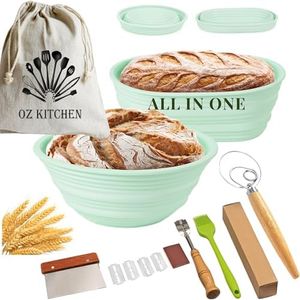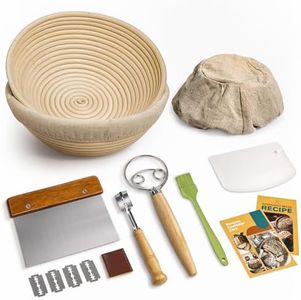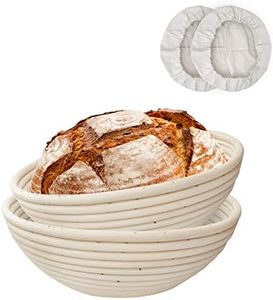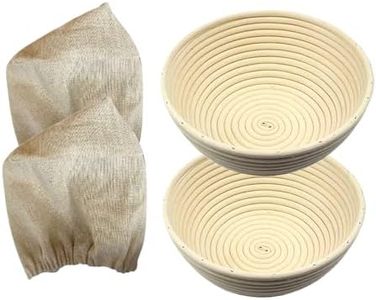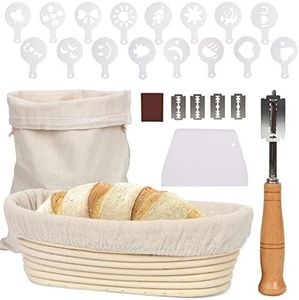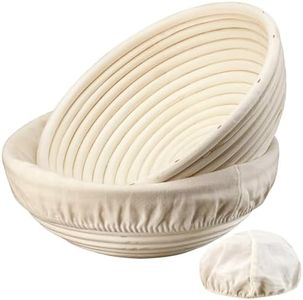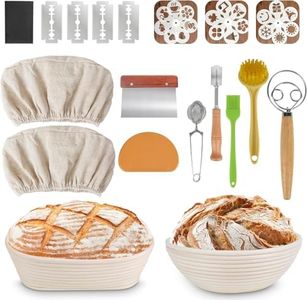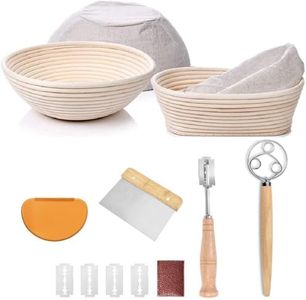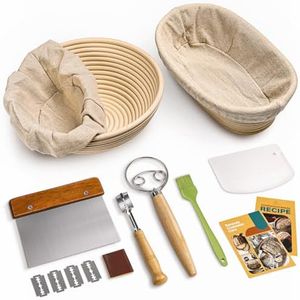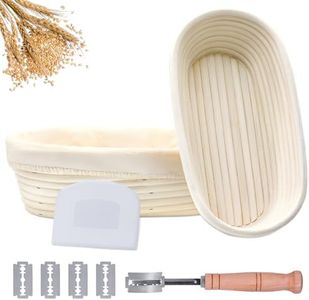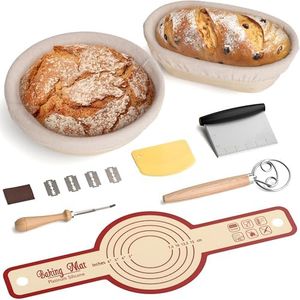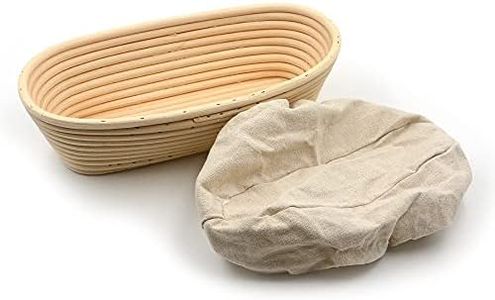We Use CookiesWe use cookies to enhance the security, performance,
functionality and for analytical and promotional activities. By continuing to browse this site you
are agreeing to our privacy policy
10 Best Proofing Basket
From leading brands and best sellers available on the web.Buying Guide for the Best Proofing Basket
Picking the right proofing basket is an important step for anyone interested in baking delicious, artisan-style bread at home. The proofing basket, sometimes called a banneton, helps the dough keep its shape while it rises before baking. It also creates that attractive spiral or swirled pattern on the bread crust. Understanding the key features of a proofing basket can help you choose one that suits your baking style and needs best.MaterialProofing baskets are commonly made from rattan, plastic, or wood pulp. The material affects how the dough breathes and how easy it is to clean the basket. Rattan is traditional and well-loved because it allows air to circulate, giving your dough both structure and a beautiful pattern, but it may need a little more care to clean. Plastic is easier to clean and often dishwasher-safe, though it doesn't create the same rustic pattern on your bread. Wood pulp is somewhere in-between, being both breathable and somewhat easier to keep clean. Consider what matters most to you: the pattern on your bread, ease of cleaning, or authenticity, and pick a material based on that.
ShapeProofing baskets come in several shapes, such as round, oval, and sometimes rectangular. The shape you choose will determine the final look of your bread. Round baskets produce classic boules (round loaves), while oval baskets are good for batard (oval) or sandwich-style loaves. Consider the types of bread you enjoy making or want to try, and select a shape that complements your baking aspirations.
Size (Capacity)Size is typically measured in how much dough the basket can hold, commonly ranging from small (about 500g of dough) to large (about 1kg or more). If you bake small loaves for yourself or a couple of people, go for a smaller basket. If you make larger loaves or bake for a family, a bigger basket will be more suitable. It’s important the basket is not too big or too small for your typical dough batch—this ensures the loaf rises correctly and holds its shape well.
LinerMany proofing baskets come with a cloth liner. A liner prevents the dough from sticking, offers a smoother finish on your loaf, and can help contain wetter doughs. Leaving out the liner results in a more defined spiral or weave pattern on the crust. If you often work with sticky doughs, or prefer a smooth crust, a liner is helpful. If you want a more rustic, patterned look, you can skip the liner. Decide based on your preferred bread style and how you feel about dealing with a bit of extra flour and clean-up.
Ease of CleaningCleaning is important because leftover dough can harbor bacteria or mold. Some baskets are easier to clean than others, especially those made from plastic or with removable liners that can be machine washed. Rattan and wood pulp baskets need to be gently brushed and thoroughly dried. If you prefer low-maintenance baking tools, look for a proofing basket with features that make cleaning easy for you.
